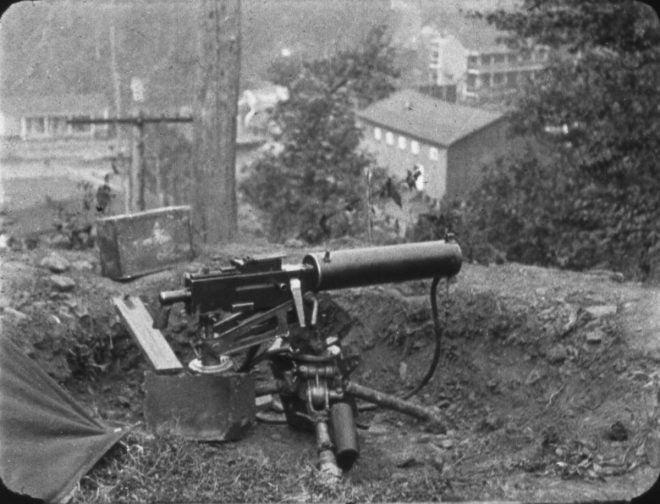Between the dates of August 25th, 1921 and September 2nd, 1921, a fierce battle between striking American coal miners and the combined forces of the West Virginia State Police, Logan County Sherrif’s Department, and the Baldwin-Felts Detective Agency would take place. Being one of the largest domestic battles to take place during the 20th century, the Battle at Blair Mountain would have long-lasting repercussions for both the coal industry as well as the state of labor unions within the United States and is also a strong demonstration of how an armed populace can hold their own against an organized and well-armed force.
The Battle of Blair Mountain was unique as it is the first time in American history that a military plane has been used in a surveillance role during a large-scale domestic confrontation. In addition, the battle would in some ways mark the beginning of the end for the coal industry after the battle was over. Today, we’ll be going over what led up to the battle and try to piece together what exactly happened and how everything turned out in the end for everyone involved.
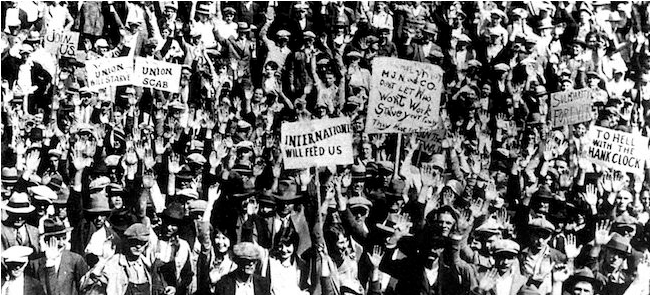
Please bear in mind that the Battle of Blair Mountain is a single event in an insanely complex and much larger overall conflict that took place during what is known as the Coal Wars. For brevity’s sake, some details have been skipped.
Coal Miners Revolt: The Battle of Blair Mountain
Disclaimer: This article is not intended to sit in judgment of any party that was involved in this incident. The purpose of this article is to take the facts which have been presented to the public to show readers a clinical, unbiased, and truthful look at an unfortunate chain of events.
The newly elected president of the United Mine Workers of America (UMWA) labor union John L. Lewis set out to end the several decade-long resistance to mine companies allowing labor union workers within their ranks. Lewis specifically set out to unionize the workers of Mingo county who were still largely at the mercy of the mine companies. Miners were often met with immediate termination and eviction from company towns if they were found to be members of a labor union which led to much resentment among the already frustrated mine workers.
Spark of Revolt
In May of 1920, a detective agency by the name of Baldwin-Felts had been hired by the coal companies within Mingo county to evict some 3,000-odd mineworkers who had chosen to unionize and were subsequently fired. Several detectives set out that morning to begin removing residents from the Stone Mountain Coal Company property. It was rumored that agents had concealed Tommy Guns in their suitcases.
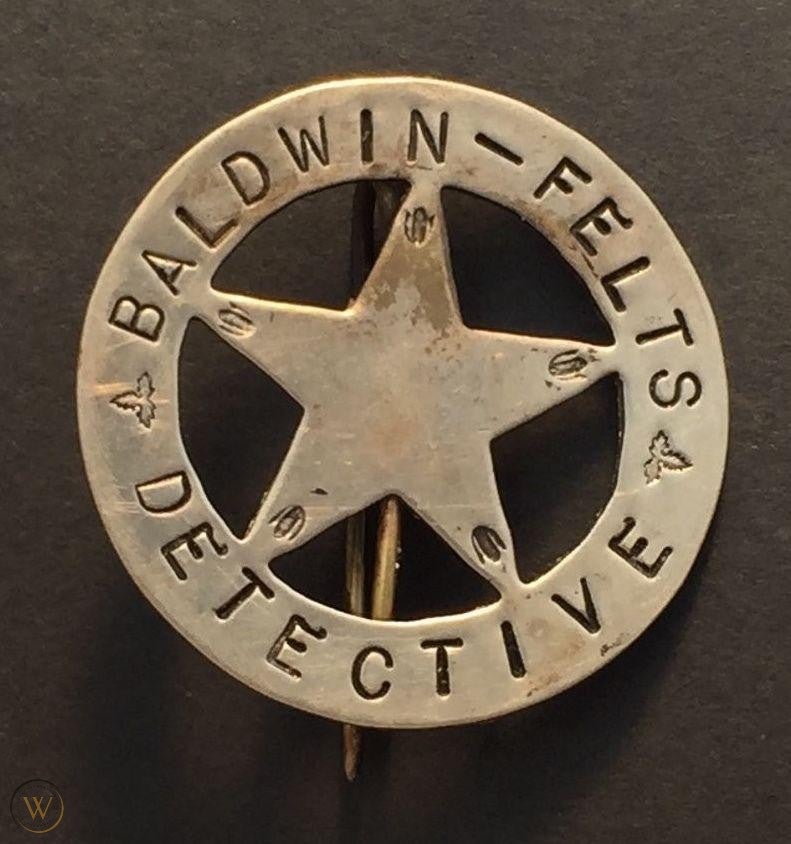
Photo: Worthpoint
As the detectives threw out a woman, her children, and their belongings from their home at gunpoint, outraged coal miners witnessed this event and spread the word across town which eventually made its way to local Police Chief Sid Hatfield (himself a former miner). Hatfield deputized several miners and attempted to detain the (eleven) agents from the agency who were on their way out of town.
In response to the attempted arrest, the agents instead told Police Chief Hatfield that they had a warrant out for his arrest and a miner subsequently notified Mayor Cabell Testerman that the police chief was being arrested. Before today Mayor Testerman had already been approached by Albert Felts (from the detective agency) with a $500 bribe and requested that they be allowed to place machine guns on the roofs within the town (presumably to make resistance to eviction less likely).
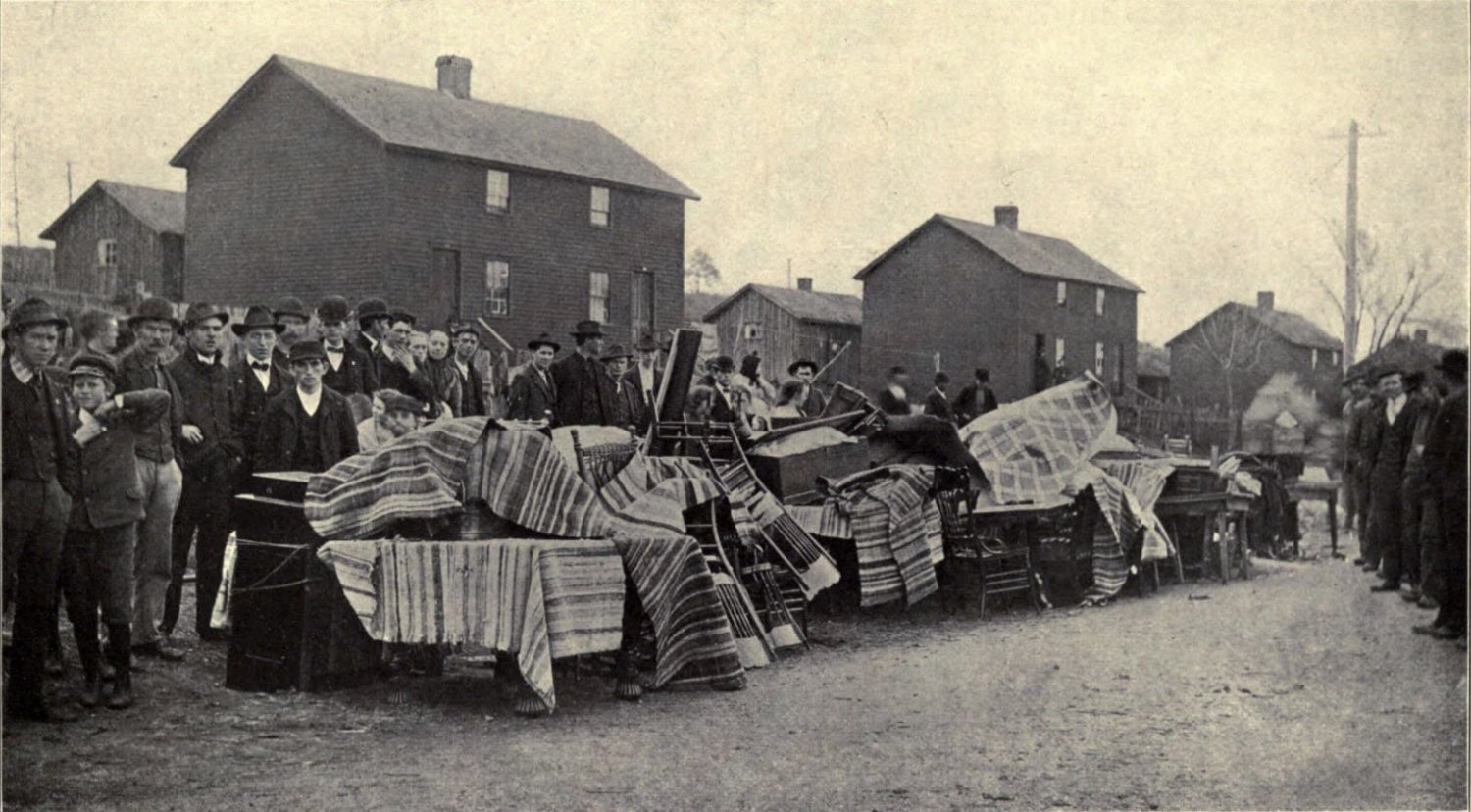
Miners being evicted from their homes. Photo: ExplorePAHistory
The mayor requested that the agents show them their warrant for Hatfield’s arrest and upon seeing it, declared that it was bogus. It was at this point that a brief but deadly gunfight broke out between the deputized miners, Hatfield, and the thirteen Baldwin-Felts detectives. In the end, mayor Testerman, one miner, an unarmed bystander from the town, and seven agents lost their lives with two of them being Albert and Lee Felts – brothers of Thomas Felts, co-owner of the detective agency. This initial gunfight was later known as the Matewan Massacre and would mark the beginning of an escalating series of gunfights and battles that would eventually be known as the Battle of Blair Mountain.
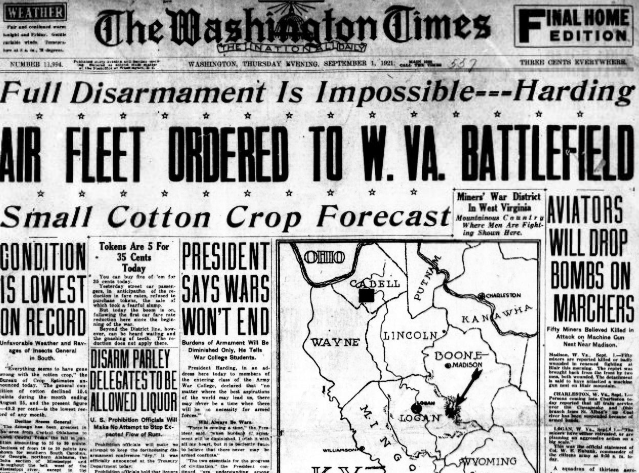
The Battle of Blair Mountain
Over the next couple of months, more blood would be shed. The new-found “hero” of the miner’s Sid Hatfield would be murdered by Baldwin-Felts agents in broad daylight, miners would dynamite mine equipment and attack state troopers and steal their weapons. Everything came to a head by August 25th when the official battle would begin with an estimated 13,000 miners rallying together to march on Logan and Mingo county to forcibly unionize the area.
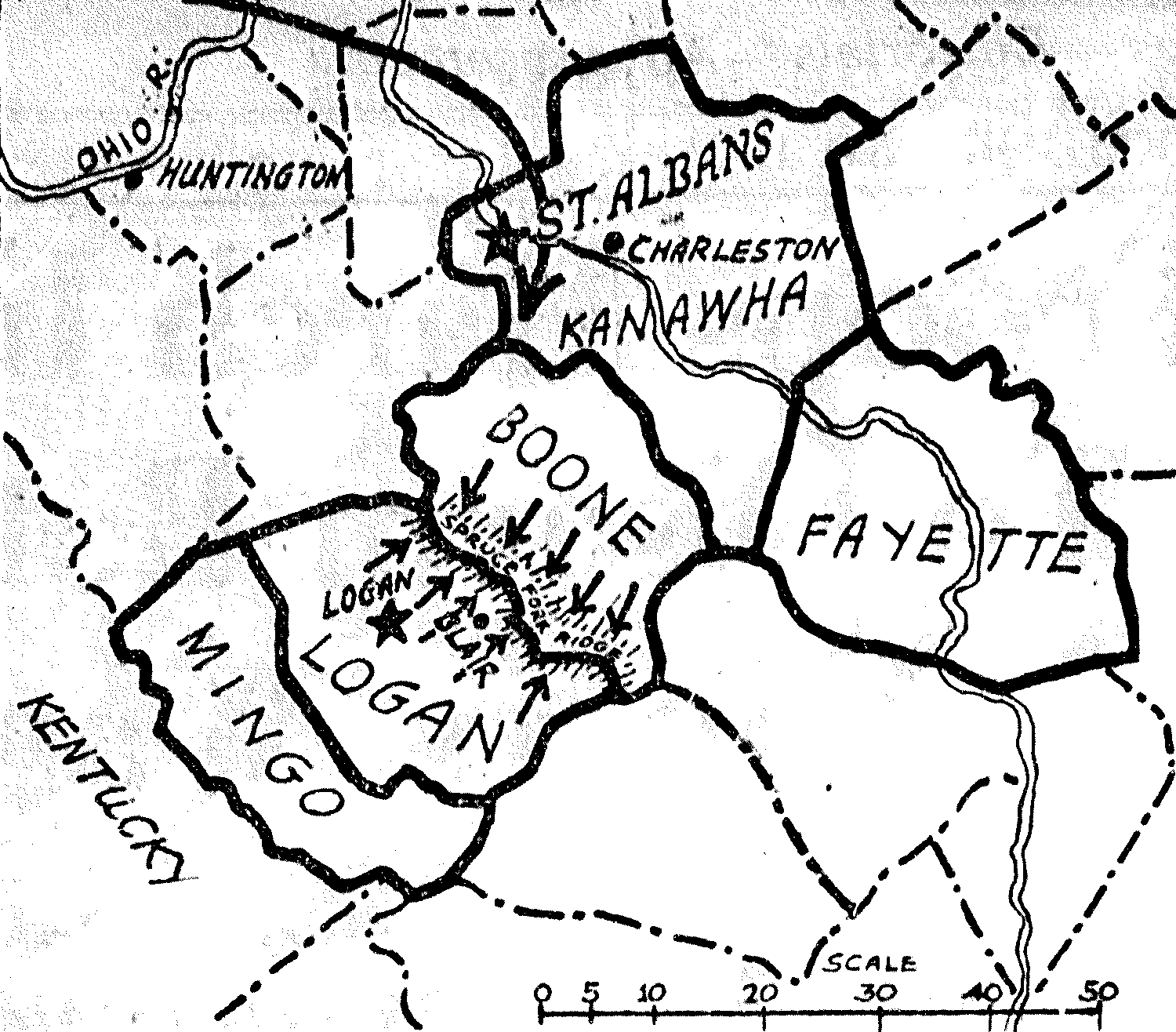
Movements throughout the battle (Federal troops (top), Miners (middle), and Blair Mountain Defenders (bottom).
In response to the escalating tensions between the miners and anti-union forces (consisting of about 2,000 men and various privately acquired planes) President Warren Harding threatened to send in the National Guard to calm down the situation. By this point, Sherrif Don Chafin had fortified Blair Mountain with the aid of the Logan County Coal Operators Association.
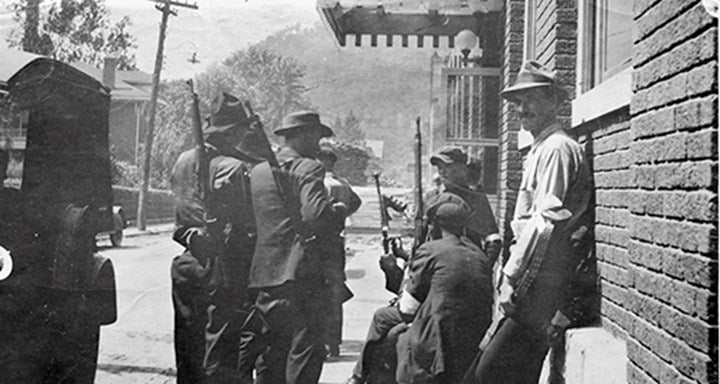
Several defenders armed and ready.
Upon hearing of the threats from the President who implied that US Army troops and bombers would be sent to the area, the Miners initially turned tail to return home. During their initial trek back to their homes, miners caught wind of a rumor that Sherrif Chafin’s men had shot union sympathizers – the miners turned back to head towards Sharples where the supposed shootings had taken place. At some point, United States Army Martin MB-1 bombers were deployed for surveillance purposes, one bomber crashed on its return flight and all three crew were killed – these would be the only deaths from the United States Army during the course of the battle.
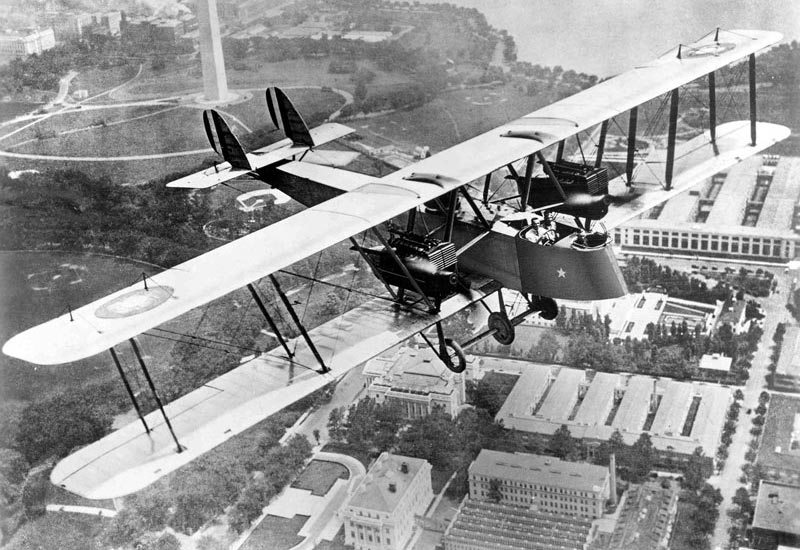
An MB-1 Bomber. Photo: Military Factory
By August 29th, union miners in stolen train cars led by Bill Blizzard arrived at Blair Mountain to meet Chafin’s men. Chafin and his men had both a territorial advantage as well as an arms advantage. Chafin’s forces hired several privately owned planes to drop explosives and poison gas on the miners and it is also speculated that Chafin’s forces had access to Thompson submachine guns, several M1895 Colt crew-served machine guns, and several “authentic” weapons that were brought to the area by volunteers willing to help defend the town against the miner’s attack.
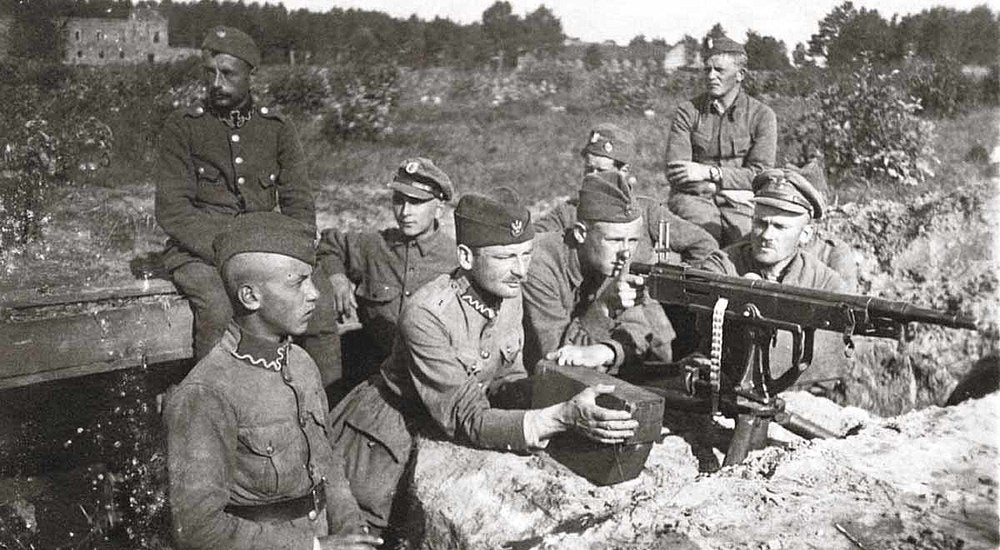
Polish soldiers with an M1895 Colt-Browning machine gun like what was used to defend Blair Mountain
Miners brought to bear all sorts of weapons ranging from .22 rimfire guns, some crew-served machine guns and rifles such as Krag–Jørgensens, Winchester M1893 shotguns, 1873 Winchesters, Springfield 1873 Trapdoor rifles, and several handguns such as Colt Single Action Army revolvers. The Governor of West Virginia eventually appointed Colonel William Eubanks of the WV National Guard to command the volunteer and police forces who were defending Blair Mountain on August 30th and over the next week, a series of skirmishes left 30 defenders and up to 100 miners dead.




As the battle raged on between the two sides, Federal Troops approached from the rear of the miners’ position. By September 2nd the federal troops had arrived and to their relief, were met with no resistance as many of the miners were veterans themselves and refused to fire on US troops. Shortly after the arrival of US troops, Bill Blizzard ordered the miners to return home, thus marking the end of the Battle of Blair Mountain.
Aftermath
As the miners left the area, many dropped or hid their weapons in the forest to avoid prosecution by the government. However, nearly 1,000 miners including Bill Blizzard himself were captured and indicted for murder, conspiracy to commit murder, accessory to murder, and treason against the State of West Virginia. Although Blizzard was acquitted, many of the miners who were not acquitted of their crimes only served short prison sentences for their participation in the battle.
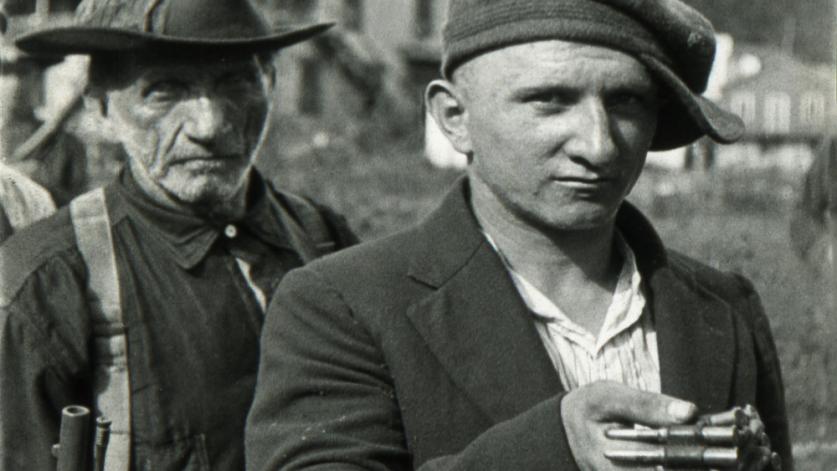
Miners surrender their ammunition after the battle.
Despite being a complete tactical victory for the defenders of Blair Mountain, the damage to the coal industry had already been done and the subsequent national attention on the trials of the miners meant that more people than ever were exposed to the plight of coal miners across the country and would eventually lead to much stronger and better-organized labor unions within the United States.
Coal miners weren’t any better off, however, as the unions saw a drastic decline in membership over the next several years following the defeat at Blair Mountain declining from almost 50,000 down to fewer than 10,000 members. Later unions would form stronger strategies to win legal battles in court and turn public perception in their favor instead of inciting battles with the various industries that started to see unionization such as the steel industry.
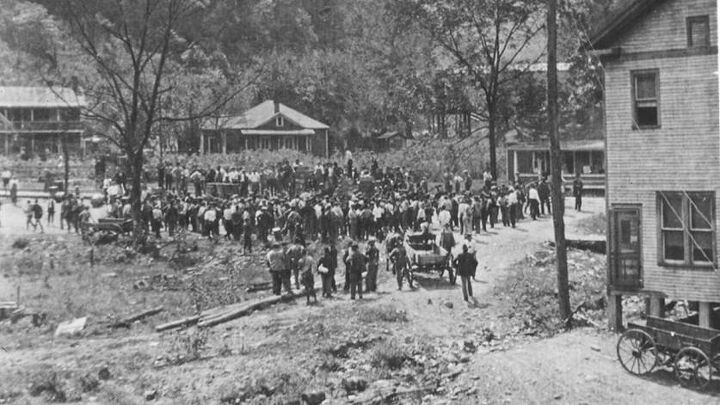
Blair Mountain after the battle | Photo: West Virginia Mine Wars Museum
The Battle of Blair Mountain may have not been such a decisive victory had it not been for the concise of the miners combined with the arrival of federal troops. Despite being outgunned, the miners almost managed to break through one of the fortified lines of the defenders and closer to their end goal of Logan and Mingo county.
Not the Last Domestic Battle
So far we’ve covered a few domestic battles that have taken place on American soil – more are in the works and suggestions are always appreciated. I hope this brief delve into the history of the Battle of Blair Mountain was informative and enjoyable. What domestic battle breakdown would you like to see next? Let us know down in the comments.
 Your Privacy Choices
Your Privacy Choices
